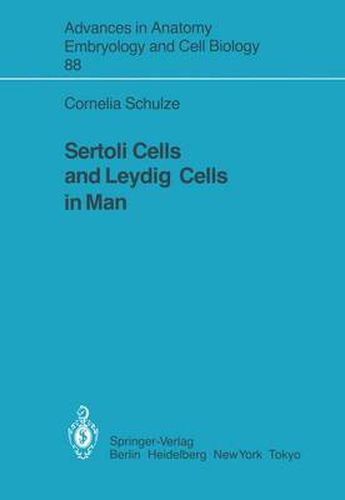Readings Newsletter
Become a Readings Member to make your shopping experience even easier.
Sign in or sign up for free!
You’re not far away from qualifying for FREE standard shipping within Australia
You’ve qualified for FREE standard shipping within Australia
The cart is loading…






This title is printed to order. This book may have been self-published. If so, we cannot guarantee the quality of the content. In the main most books will have gone through the editing process however some may not. We therefore suggest that you be aware of this before ordering this book. If in doubt check either the author or publisher’s details as we are unable to accept any returns unless they are faulty. Please contact us if you have any questions.
The testis is composed of seminiferous tubules and interstitial tissue. The most important component of the interstitial tissue are the testosterone-producing Leydig cells. The seminiferous tubules contain the successive generations of germ cells, which can only exist in the presence of Sertoli cells. Sertoli cells mediate the effect of testosterone, which is indispensable for the maintenance of spermatogenesis. Consequently, the function of the Sertoli cells depends large lyon the function of the Leydig cells, and a local control mechanism between the two cell systems has been assumed. Sertoli cells are supposed to interfere with the regulation of Leydig cell hormone production (Aoki and Fawcett 1978; Sharpe et al. 1981). Few cell types of the testis have received as much attention in recent years as have the Sertoli cells. While comprehensive data had accumulated concerning the differentiation of germ cells, there was formerly little information available on the influence of Sertoli cells on this process. Only through recently developed methods and experimental approaches could their central role in spermatogene sis be verified. Sertoli cells are the only somatic cells in the seminiferous tubules. Their origin is still disputed (for references see Ritzen et al. 1981). They supposedly stem either from the coelomic epithelium or from mesenchymal cells of the genital ridges. According to Wartenberg (1978) they are derived from a gonadal blas tema containing cells from both the coelomic epithelium and the mesonephros.
$9.00 standard shipping within Australia
FREE standard shipping within Australia for orders over $100.00
Express & International shipping calculated at checkout
This title is printed to order. This book may have been self-published. If so, we cannot guarantee the quality of the content. In the main most books will have gone through the editing process however some may not. We therefore suggest that you be aware of this before ordering this book. If in doubt check either the author or publisher’s details as we are unable to accept any returns unless they are faulty. Please contact us if you have any questions.
The testis is composed of seminiferous tubules and interstitial tissue. The most important component of the interstitial tissue are the testosterone-producing Leydig cells. The seminiferous tubules contain the successive generations of germ cells, which can only exist in the presence of Sertoli cells. Sertoli cells mediate the effect of testosterone, which is indispensable for the maintenance of spermatogenesis. Consequently, the function of the Sertoli cells depends large lyon the function of the Leydig cells, and a local control mechanism between the two cell systems has been assumed. Sertoli cells are supposed to interfere with the regulation of Leydig cell hormone production (Aoki and Fawcett 1978; Sharpe et al. 1981). Few cell types of the testis have received as much attention in recent years as have the Sertoli cells. While comprehensive data had accumulated concerning the differentiation of germ cells, there was formerly little information available on the influence of Sertoli cells on this process. Only through recently developed methods and experimental approaches could their central role in spermatogene sis be verified. Sertoli cells are the only somatic cells in the seminiferous tubules. Their origin is still disputed (for references see Ritzen et al. 1981). They supposedly stem either from the coelomic epithelium or from mesenchymal cells of the genital ridges. According to Wartenberg (1978) they are derived from a gonadal blas tema containing cells from both the coelomic epithelium and the mesonephros.